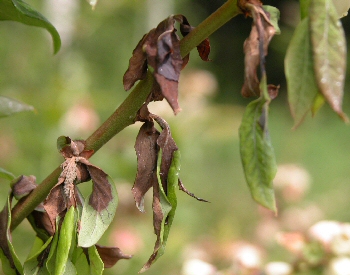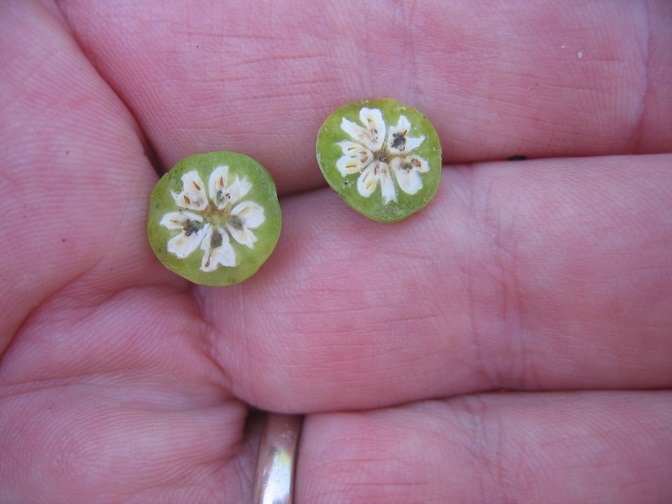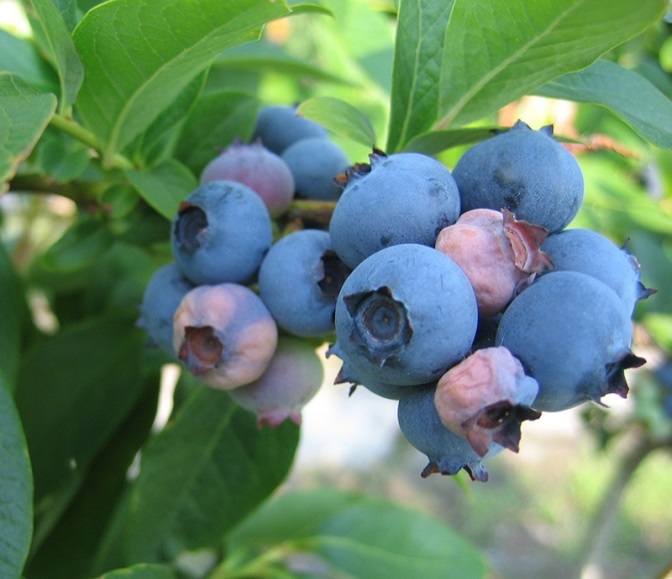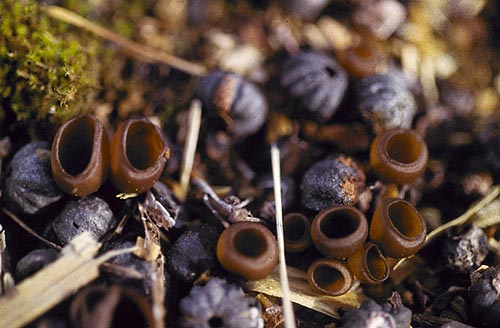
Mummy berry disease
| Primefact number | Edition | Published | Author |
|---|---|---|---|
| 1622 | First | Jan 2018 | Plant Biosecurity and Product Integrity |




Mummy berry disease (Monilinia vaccinii-corymbosi) is an exotic plant pest not present in Australia. This disease is a serious threat to Australia’s blueberry industry.
Mummy berry is one of the most serious diseases affecting blueberry plants. The disease is caused by a fungus that attacks young shoots and ‘mummifies’ fruit. There is zero tolerance for mummified fruit in the blueberry market.
Notifiable status
Mummy berry disease (Monilinia vaccinii-corymbosi) is not a notifiable plant disease in NSW.
However, if you suspect Mummy berry disease (Monilinia vaccinii-corymbosi):
- Call the Exotic Plant Pest Hotline 1800 084 881
- Email biosecurity@dpi.nsw.gov.au with a clear photo and your contact details
A full list of notifiable plant pests and diseases can be found in Schedule 2 of the NSW Biosecurity Act 2015.
Description
Young shoots infected with the mummy berry fungus develop characteristic browning of leaf midribs in the spring. The affected leaves produce tan to grey powdery spores at the base of the leaf and along affected tissues (Figure 1).
Young berries appear unaffected, but when split open white fungus can be seen growing inside (Figure 2). Mature infected berries turn pink to light brown and develop a wrinkled appearance (Figure 3). Diseased berries eventually shrivel and harden before dropping to the ground and turning black. The final appearance is likened to tiny black pumpkins (Figure 4).
Cup shaped fungal bodies (apothecia) are produced in spring from infected fruit that has fallen to the ground (Figure 4).
Damage
Blighting of young shoots reduces plant vigour. Hard rot and drop of blueberry fruit significantly decreases the yield of plants and infected fruit is strictly unmarketable.
Lifecycle
The mummy berry fungus overwinters in dropped berries on the ground before germinating in spring to produce cup shaped fungal fruiting bodies (apothecia). These fruiting bodies produce a mass of spores that are carried by wind to infect new plants. Over the growing season, spores are continually produced by fungus present in the canopy.
The mummy berry fungus may survive in mummified berries on the ground for a year or more.
Host range
Mummy berry affects wild and cultivated species of blueberry.
Spread
Fungal spores are spread by wind and rain and can be transported longer distances on plant material, equipment, vehicles and people.
Mummy berry spores can also be spread in soil that becomes infected by mummified berries that have dropped to the ground.
Distribution
Mummy berry is native to North America and occurs in many blueberry growing regions of the United States. It is also found in South America and was reported in Europe for the first time in 2003.
Actions to minimise risk
Put in place biosecurity best practice actions to prevent entry, establishment and spread of pests and diseases:
- practice “Come clean, Go clean”
- ensure all staff and visitors are instructed in and adhere to your business management hygiene requirements
- source propagation material of a known high health status from reputable suppliers
- monitor your plants regularly
- keep records

